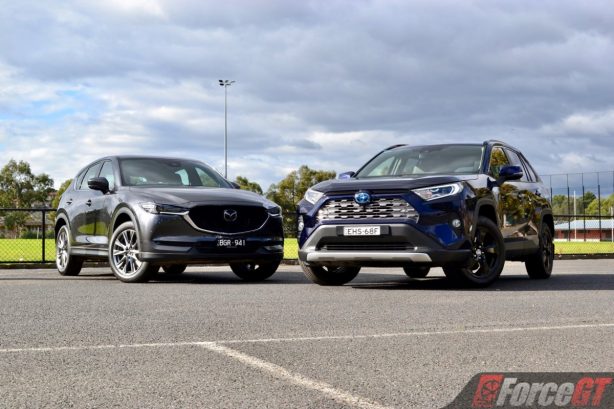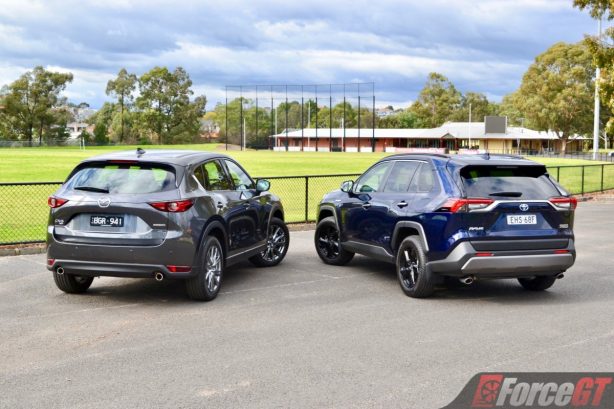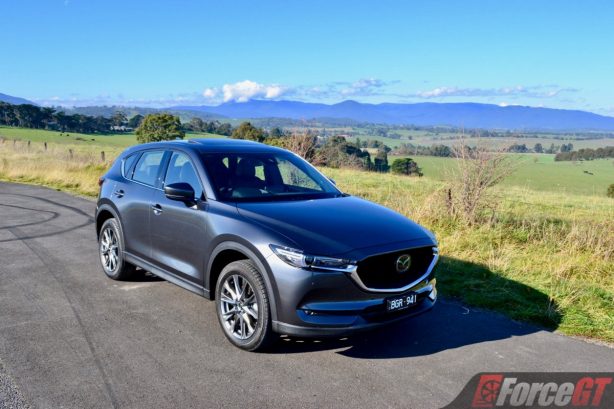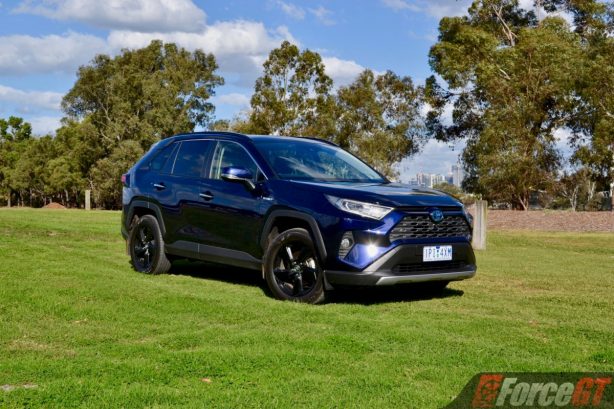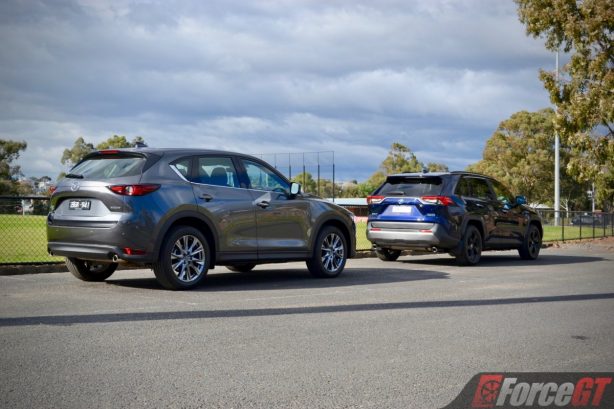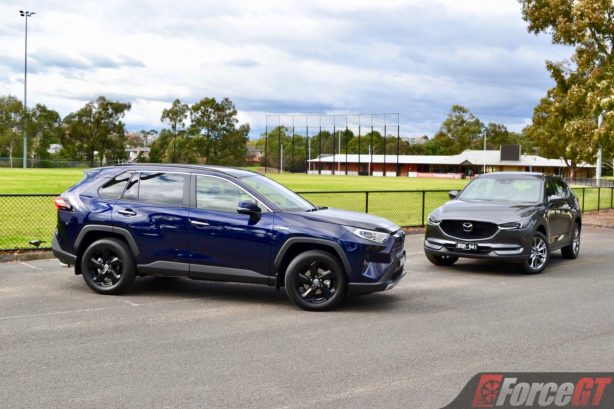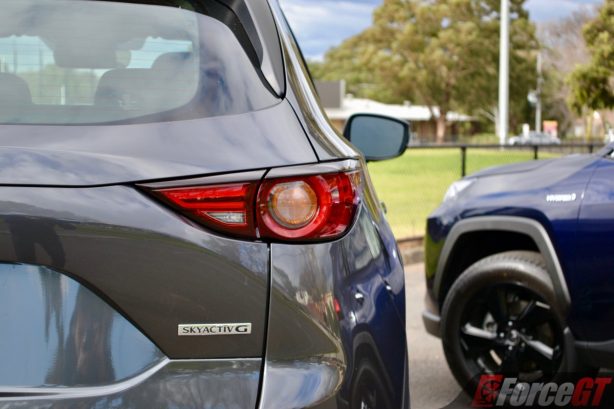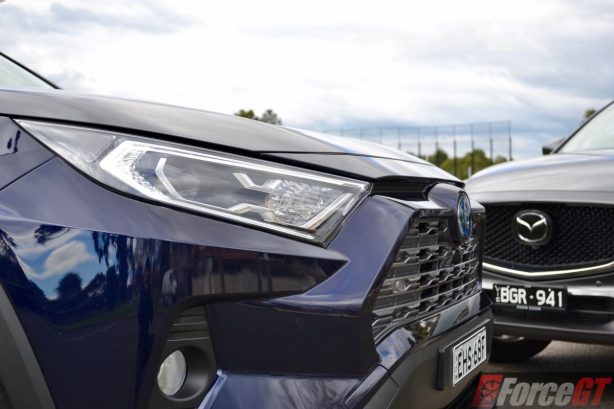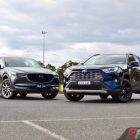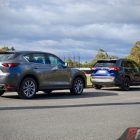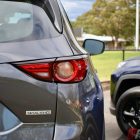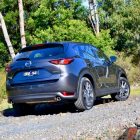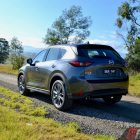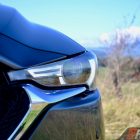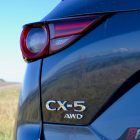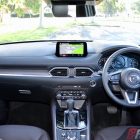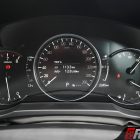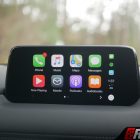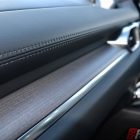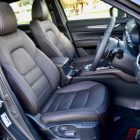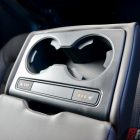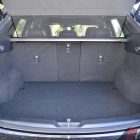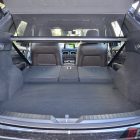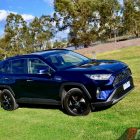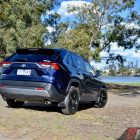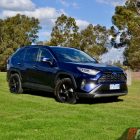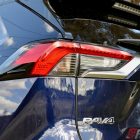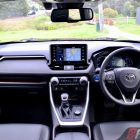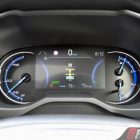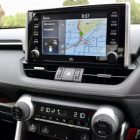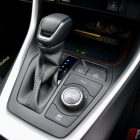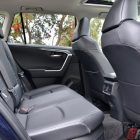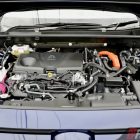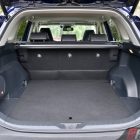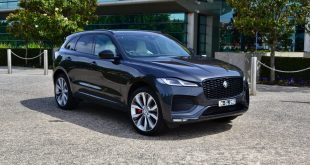The mid-size SUV market is currently the hottest and fastest-growing car segment. With an explosion of new players joining the scene over the years, there are currently no less than fifteen models fighting for a piece of the pie. And it’s all because the medium SUV has replaced the humble sedan as the definitive family hauler.
Not one model in the segment is downright bad, and with so many to choose from, deciding on the right one can be a dilemma. So, we have brought together two of the segment’s best sellers and set them on a collision course.
The dominant Mazda CX-5 and the trusty Toyota RAV4 have been consistently swapping places at the top of the medium SUV sales chart in Australia for the last few years. Such fierce was the competition that last year, just 1,279 units separated these two heavyweights.
The big question is which of these two SUVs do we prefer? For a level playing field, we are comparing the range-topping variants of both nameplates, pitting the $50,830 Mazda CX-5 Akera 2.5-litre turbo petrol all-wheel drive against the $46,290 Toyota RAV4 Cruiser Hybrid all-wheel drive. Yes, there’s the RAV4 Edge that sits atop the Cruiser but that’s more off-road orientated and hence not quite as suitable for this shootout as the RAV4 Cruiser.
On the outside
There’s no doubt the Mazda CX-5 is one handsome-looking SUV. Amongst the sea of generic medium crossovers, the CX-5 stands out with a more premium and elegant design. The front fascia is dominated by that large grille cutting into the front bumper and flanked by a pair of swept-back headlights. The rear is neat, with a relatively short overhang for a sporty look, while the sides are characterised by sweeping lines and sculpted surfaces.
The proportion is spot on, too, and despite being the older of the two cars here, the CX-5 still looks as fresh as its newer rival.
The headlights are LED all-round, while the wheels are 19-inch items. Our test car is also draped in a new colour called Polymetal Grey Metallic, which, as its name suggests, is a deep and richly metallic grey shade inherited from the Mazda MX-5. Photos don’t do justice, it looks fantastic in the metal.
Toyota RAV4s of the past had not been the subject of much talking when it comes to styling. They were derivative and bland at best. This new one is anything but. While the CX-5’s design is all about refinement and details, the RAV4 takes on the approach of ruggedness and adventurous.
The front is aggressive, the floating roof is playful and the beefed-up wheel arch and bumper mouldings should make the RAV4 relatively scratch proof in the bush.
Like the CX-5, the top-spec RAV4 gets LED exterior lighting all-round. At 18 inches, the wheels are an inch smaller, but coated in sporty gloss black paint that is exclusive for the Cruiser hybrid variant.
Side by side, the RAV4 is some 50mm longer than the CX-5, while across the Toyota is 15mm wider as well.
Which SUV looks better? It’s a subjective question but it’s safe to say that the CX-5’s more restraint and cleaner design will most certainly appeal to a wider audience.
On the inside
The CX-5’s interior does not belong to a car of this class. It plays in another league, the premium segment. The materials are first rate, as evident by those richly deep gloss black trims around the centre console and door switches. The polished aluminium-look inserts look incredibly delicate as well, so are those real wood trims in the dashboard and door cards.
There’re also the luxuriously fine dark russet nappa leather, frameless rear-view mirror and neatly integrated part digital and part analogue instrumentation cluster. Even the switchgear and buttons have that really refined tactile feel to them.
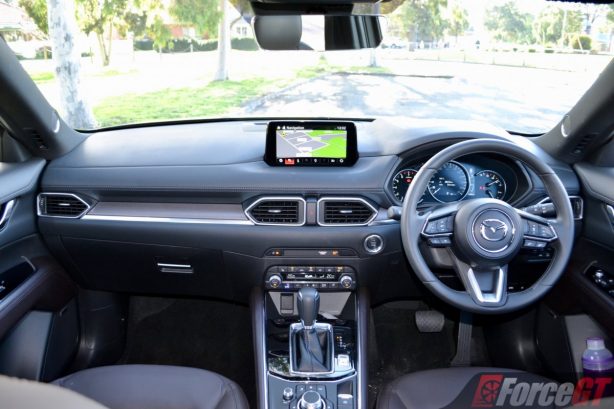
The CX-5 uses a remote rotary interface to operate the infotainment system, the kind usually found in premium cars. It’s the only car in class to offer such interface and what an excellent system it is. The 7-inch infotainment screen is rather small though, when the competition is now all offering at least 8 inches. The Mazda also loses points for the lack of a wireless charging pad and 360-degree view parking camera, both of which fitted as standard in the Toyota.
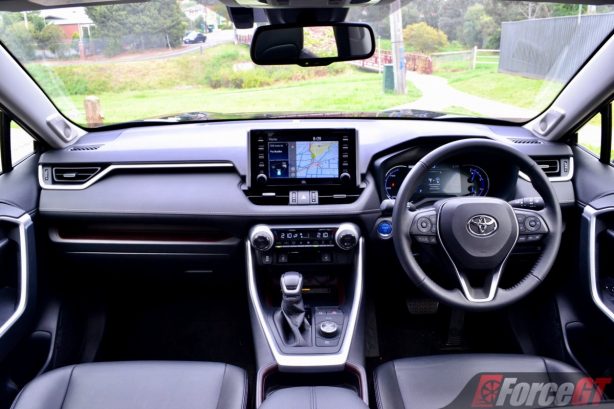
There’re lots to like about the RAV4’s cabin, but in comparison with the CX-5, the execution is a much less refined and slightly more heavy handed. The main focus of the RAV4’s interior is on practicality and durability, rather than sophistication and glamour. Storage spaces are abundance, including a tray integrated into the passenger side of the dashboard for the odd bits and bobs. The compartments are all larger than those in the CX-5, too.
Cabin ergonomics is excellent and in some areas better than the CX-5 thanks to the use of larger knobs and buttons. As a top-spec model however, it’s disappointing to see the door buttons aren’t illuminated at night. The buttons to the left of the 8-inch infotainment touch screen are also a bit of a stretch for a right-hand-drive vehicle.
Speaking of infotainment system, it’s always been a bug bear of Toyota and the RAV4’s system is no exception. Compared to the CX-5 and most rival systems, the RAV4’s infotainment interface looks dated. Certain buttons on the navigation screen are also too small, making them a pain to operate while driving.

Both the CX-5 and RAV4 systems come fitted as standard with Bluetooth connectivity, AM/FM/DAB+4 radio, Apple CarPlay and Android Auto (RAV4 built from November 2019 or later). For audiophiles, the Bose surround sound in the CX-5 does offer better clarity in the higher frequencies, but the RAV4’s JBL system isn’t far off and delivers punchier bass.
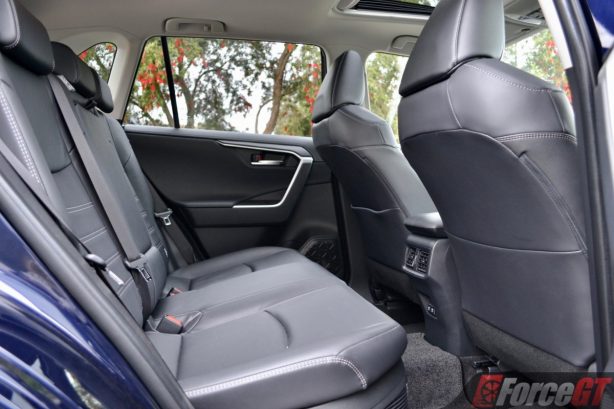
While both cars offer similar levels of space up front, the RAV4 affords better comfort for its rear passengers thanks to slightly better leg and headroom. The RAV4’s bigger rear quarter windows also let in more natural light, further elevating the sense of space in the back.
It’s not all bad news for the CX-5’s rear occupants though, with the outboard rear seats fitted with seat heaters. Seatback pockets are also fitted to the back of both front seats, where it’s only fitted to the passenger side on the RAV4.
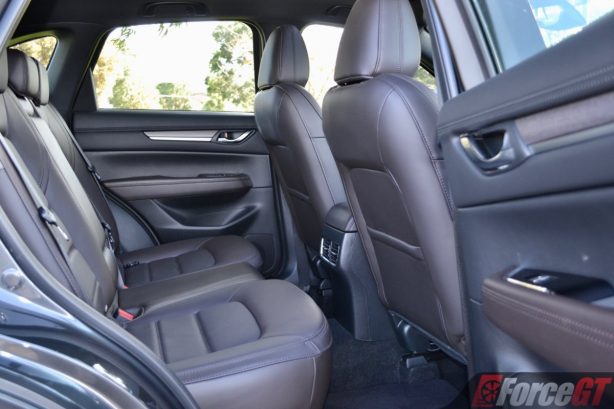
Further aback, the CX-5 offers a respectable 442 litres of boot space, but it’s nowhere near that ginormous 580 litres of capacity afforded by the RAV4. With the rear seats folded, the space expands to 1342 litres in the Mazda, up against 1690 litres in the Toyota.
In terms of core safety, both cars are comprehensively equipped. Adaptive cruise control, autonomous emergency braking, lane departure alert, speed sign recognition, blind spot monitor, rear-cross traffic alert, reversing camera and vehicle stability control are all standard fitment. The RAV4 goes a step further by offering auto high beam and auto handbrake activation (when moving into Park), though head-up display (HUD) is only found in the CX-5.
Under the skin
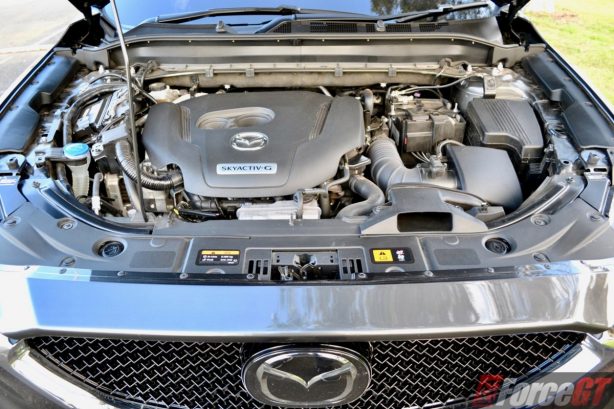
It’s a case of turbo power versus hybrid assistance for these two. The CX-5 is motivated by a 2.5-litre four-cylinder turbocharged petrol engine rated at 170kW and 420Nm, while the RAV4 makes do with a 2.5-litre four-cylinder petrol engine assisted by dual electric motors that together produce a total of 163kW and 221Nm.
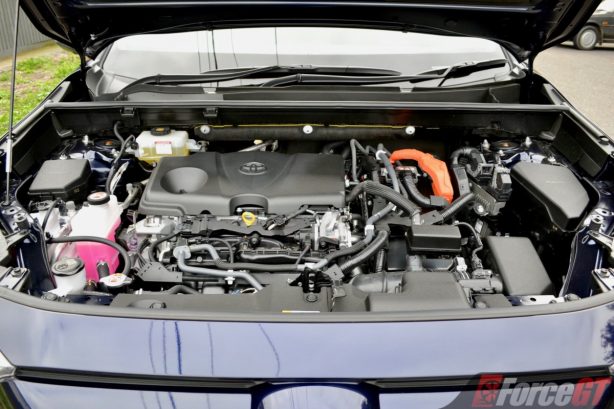
The Mazda pairs its engine with a six-speed torque converter automatic transmission, whereas the Toyota sends power through a CVT. Both cars feature all-wheel drive, but unlike the CX-5, the RAV4’s rear axle has no mechanical linkage to the engine, rather it’s driven solely by the rear electric motor. Toyota calls it ‘e-four electric-AWD’.
On the road
In terms of outright performance, the CX-5 wins hands down thanks to its strong torque which is nearly double that of the RAV4. It just pulls effortlessly in all proceedings, with the six-speed auto shifting crisply and tapping nicely on the power band at every shift. The all-wheel drive serves up incredible traction, too, making the drive secure and safe across a variety of road conditions.
Don’t be quick to write off the RAV4 though, as the hybrid drivetrain is one of the most impressive we have come across. Despite the large torque deficit compared to the Mazda, it’s still surprisingly swift getting off the line thanks to instant torque from the electric motors providing added push. The way the engine kicks in after the initial electric pull is virtually imperceptible, and thereafter the power delivery is smooth and linear.
Toyota’s hybrid system has been fined tuned to near perfection. The engine can get vocal under the hammer (the rev flare caused by the CVT doesn’t help), but for the most part its wonderfully refined and extremely quiet on cruise. Throttle response is surprisingly good, too.
Handling wise, there’s little between these two. Both cars are remarkably composed and tidy around corners, with the CX-5 offering slightly crisper response through a livelier steering. while the positioning of the RAV4’s hybrid battery just fore of the rear axle helps distribute weight more evenly, resulting in a more neutral handling.
The chassis on both cars are some of the best in the segment. Their rigidity and well-judged suspension tuning mean ride and handling balance is as fined as it can get for a medium SUV.
Ride comfort around town for both cars is good. The Mazda does ride a tad firmer than the Toyota at low speeds, settling considerably above 60km/h to match the RAV4’s compliance.
In the long run
Both the CX-5 and RAV4 come with the recently lengthened warranty of 5 years, with unlimited kilometre giving further assurance.
The Mazda requires a service at 10,000km or 12 months, while the Toyota is not due for one until 15,000km or 12 months.
Both cars are offered with capped price servicing, with the RAV4 capped at $210 per service for the first 5 years or 75,000km, and the CX-5 asking $335 for each dealer visit for the first 5 years or 50,000km. This makes the Toyota the cheaper car to maintain in the long term.
The Toyota will also yield more savings at the bowser, with the hybrid powertrain averaging just 5.6L/100km at the end of our week-long test, which is not far off the rated 4.8L/100km.
The Mazda is inherently thirstier, reporting an average of 9.4L/100km against the rated 8.2L/100km.
Both cars chew on less expensive RON 91 unleaded petrol.
Verdict
If you’re in the market for a sensible, well built and reliable medium family SUV, you can’t go wrong with either the Mazda CX-5 or Toyota RAV4. These rivals are at the top of their game, picking the right one comes down to what you’re looking for in an SUV.
The CX-5 turbo petrol is no doubt the more stylish and premium of the pair, backed by a meaty powerplant, crisp handling and a refined interior.
Meanwhile, the RAV4 hybrid combines practicality, fuel efficiency and comfort for a more all-rounded package. It also costs about $4,000 less than the CX-5.
We are in search of the better family SUV, and on that brief the RAV4 just edges out the CX-5 by a whisker.
2020 Mazda CX-5 Akera Turbo Petrol AWD | 2020 Toyota RAV4 Hybrid Cruiser e-Four | |
| Design and Comfort | 8.0 | 8.0 |
| Performance and Handling | 8.5 | 8.0 |
| Quality | 8.5 | 8.0 |
| Economy | 7.5 | 9.0 |
| Equipment and Features | 8.0 | 8.0 |
| Overall |
Pricing and Specifications
2020 Mazda CX-5 Akera Turbo Petrol AWD | 2020 Toyota RAV4 Hybrid Cruiser e-Four | |
| Price (excluding on-road costs): | From $50,830 As tested: $50,830 | From $46,290 As tested: $46,290 |
| Warranty: | 5 years, unlimited km | 5 years, unlimited km |
| Warranty Customer Assistance: | 5 years roadside | Optional yearly plans |
| Service Intervals: | 12 months, 10,000km | 12 months, 15,000km |
| Country of Origin: | Japan | Japan |
| Engine: | 2.5-litre four-cylinder turbo petrol: 170kW @ 5,000rpm, 420Nm @ 2,000rpm | 2.5-litre four-cylinder petrol hybrid with electric motors: 131kW @ 5,700rpm, 221Nm @ 3,600-5,200rpm |
| Transmission: | 6-speed automatic | CVT automatic |
| Drivetrain: | Four-wheel drive | Four-wheel drive |
| Power-to-Weight Ratio (W/kg): | 98.8 | 95.3 |
| 0-100km/h (seconds): | 7.7 | 8.1 |
| Combined Fuel Consumption (L/100km): | Claimed: 8.2/Tested: 9.4 | Claimed: 4.8/Tested: 5.6 |
| RON Rating: | 91 | 91 |
| Fuel Capacity (L): | 58 | 55 |
| Body: | 5-door SUV, 5-seats | 5-door SUV, 5-seats |
| Safety: | 5-star ANCAP, 6 airbags, ABS, BA, EBD, ESC, Lane Departure Warning, Lane-Keep Assist System, Blind Spot Monitoring, Rear Cross Traffic Alert, Emergency Brake Assist, Emergency Stop Signal, Smart Brake Support, Smart City Brake Support, Driver Attention Alert, Traffic Sign Recognition, G-Vectoring Control, Head-Up Display (HUD), front and rear parking sensors, ISOFIX | 5-star ANCAP, 7 airbags, ABS, BA, EBD, ESC, Lane Departure Warning, Lane-Keep Assist System, Blind Spot Monitoring, Rear Cross Traffic Alert, Emergency Brake Assist, Emergency Stop Signal, Automatic Emergency Braking, Driver Attention Alert, Traffic Sign Recognition, 360-degree view monitor, front and rear parking sensors, ISOFIX |
| Dimensions (L/W/H/W-B): | 4,550/1,840/1,680/2,700 | 4,600/18,55/1,685/2,690 |
| Turning Circle Between Kerbs: | 11 | 11 |
| Kerb Weight (kg): | 1,720 | 1,745 |
| Towing Capacity (kg): | Braked: 2,000/Unbraked: 750 | Braked: 1,500/Unbraked: 750 |
| Entertainment: | 7.0-inch touchscreen infotainment system, satellite navigation, Bluetooth, USB, AUX, CD, AM/FM, Apple CarPlay/Android Auto, 10-speaker BOSE stereo | 8.0-inch touchscreen infotainment system, satellite navigation, Bluetooth, USB, AUX, CD, AM/FM, Apple CarPlay/Android Auto, 9-speaker JBL stereo |
 ForceGT.com Car News, Car Reviews, Video Reviews, Tuning and much more.
ForceGT.com Car News, Car Reviews, Video Reviews, Tuning and much more. 